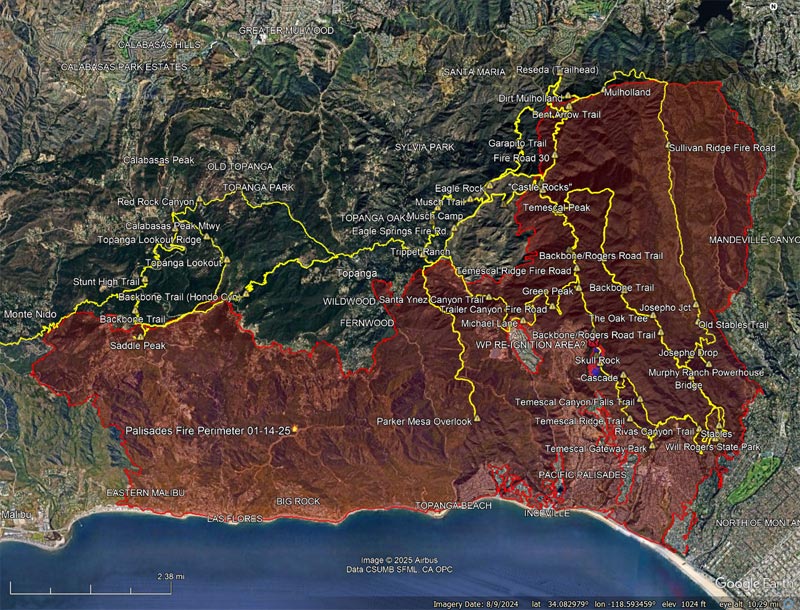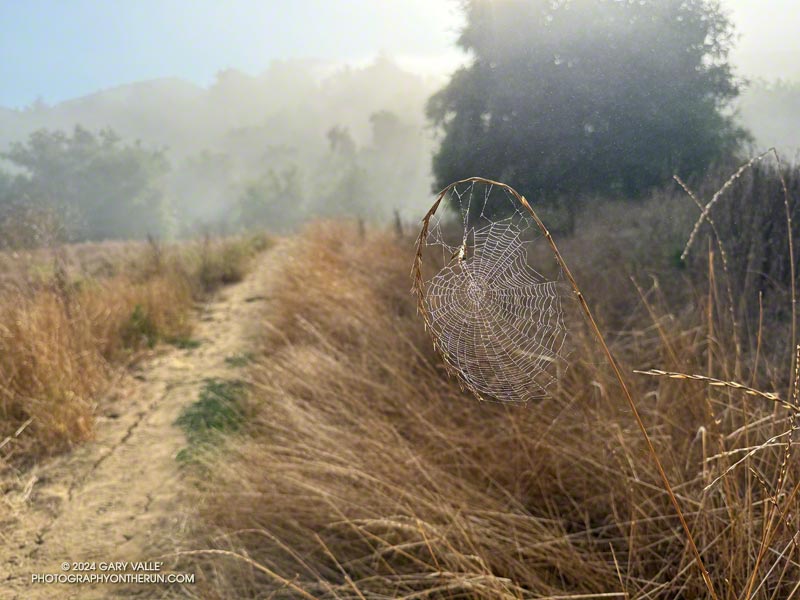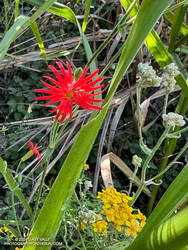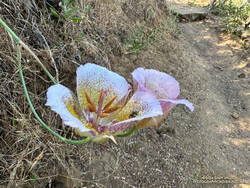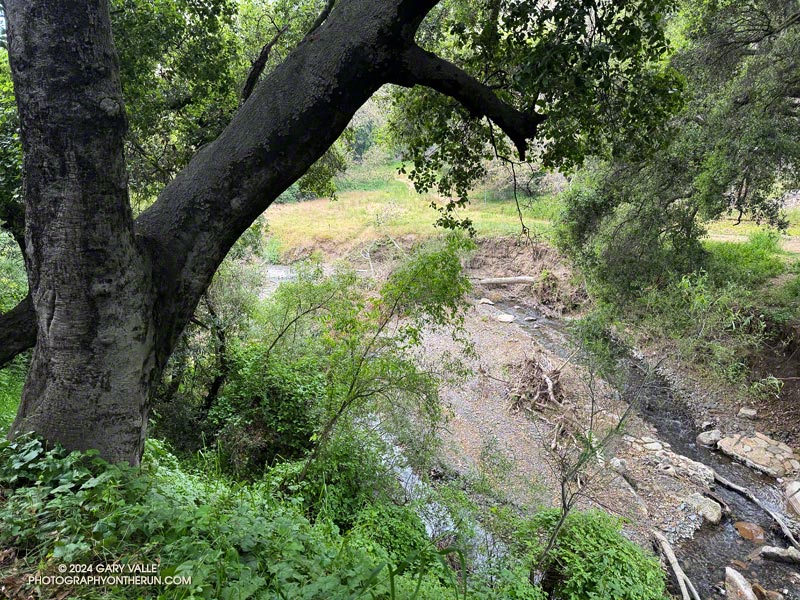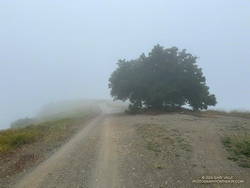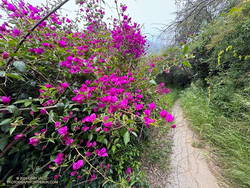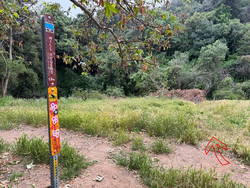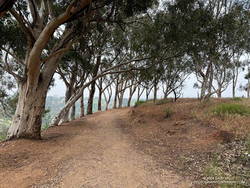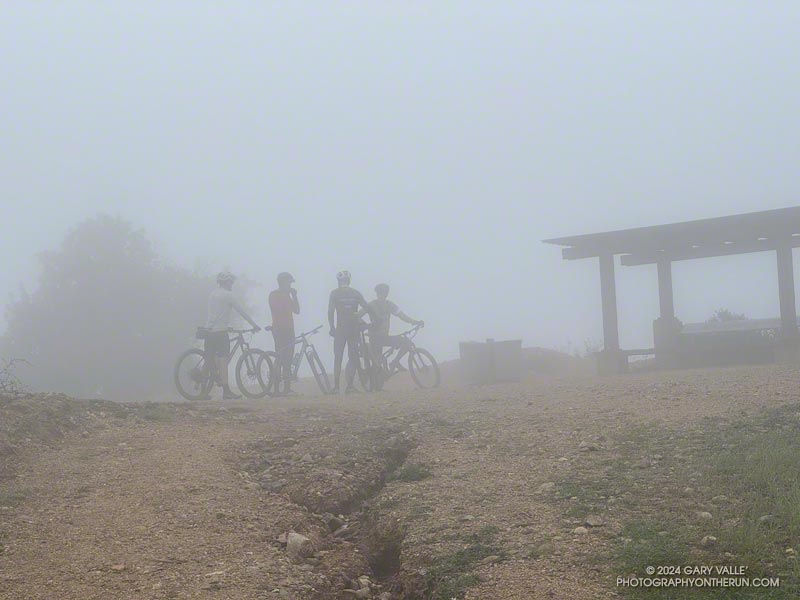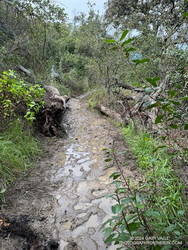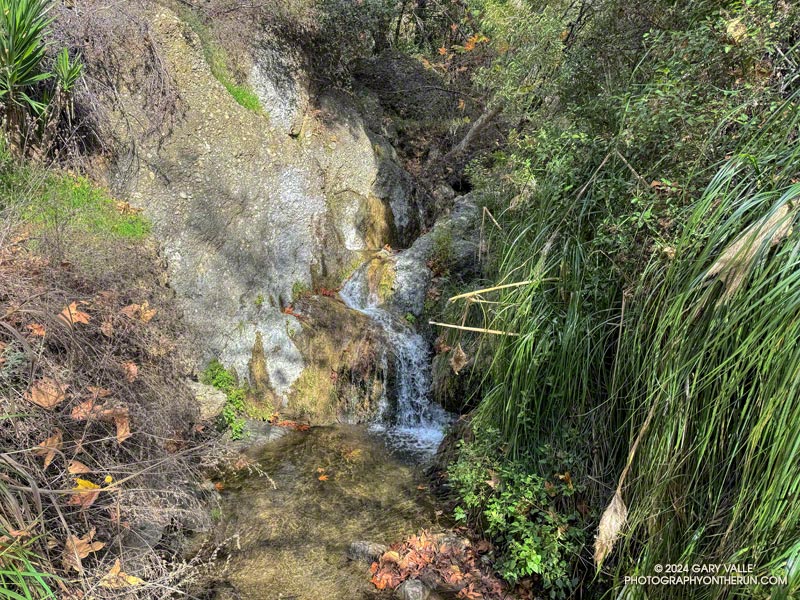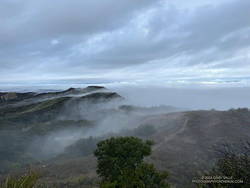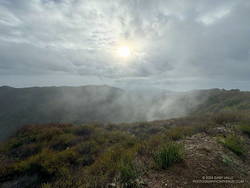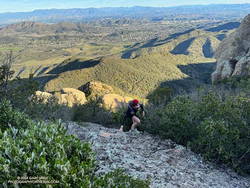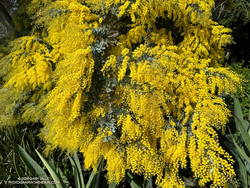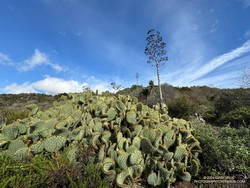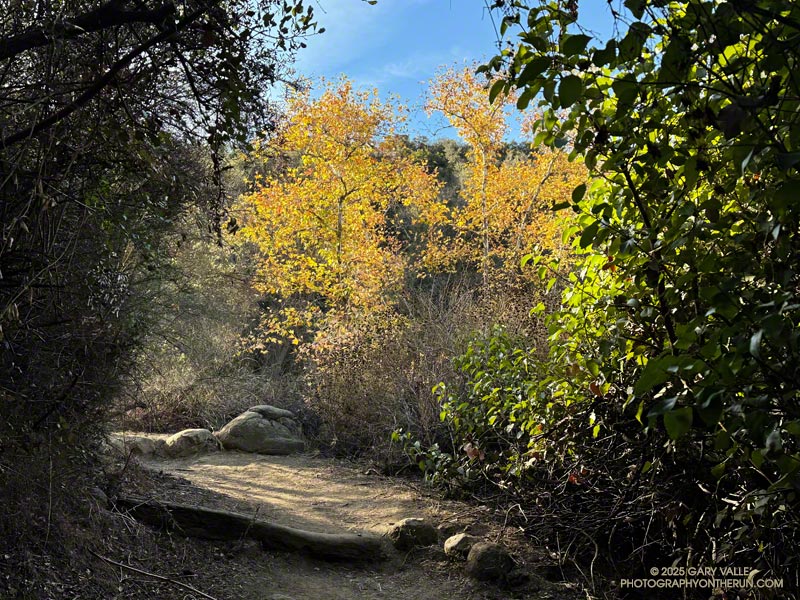
Update February 8, 2025. See the January 26 Trail Update from the Santa Monica Mountains Task Force regarding some of the impacts of the Palisades Fire on the area’s trails .
The Sunday before the start of the Palisades Fire, I ran the Trippet Ranch Loop from the Top of Reseda. Yet another weak cold front had brushed Southern California, producing little precipitation. The weather was nearly perfect for the run — breezy at times, with moderate temperatures and some high clouds.
The NWS Los Angeles/Oxnard office was already expressing concern about a potentially dangerous wind event early in the week. In an Area Forecast Discussion midday Sunday, they warned, “..STRONG AND DAMAGING WINDS AND HIGH FIRE DANGER LIKELY FOR PORTIONS OF VENTURA AND LOS ANGELES COUNTIES…” Of course, few of us could envision the staggering devastation that would ensue in the week ahead.
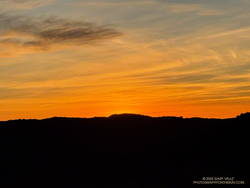
The eastern horizon glowed orange as I ran down Fire Road #30 from dirt Mulholland. If I could have seen a few days into the future, the road would have been filled with firefighters and equipment battling to halt the Palisades Fire’s westward progress. The road was empty this morning, save the scurrying towhees and raucous scrub jays.
At the Hub, I stopped to take a photo of Eagle Rock. Bush poppy, a prolific fire follower, covered much of the area between the Hub and Eagle Rock. This burned in the 2021 Palisades Fire. The hazy view extended past Eagle Rock to Calabasas Peak and Boney Mountain.
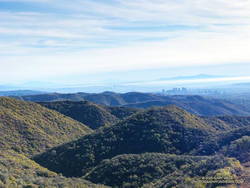
Before descending to Trippet Ranch on Eagle Springs Fire Road, I turned east on Temescal Ridge Fire Road. I would return to the Hub, but first, I wanted to visit Temescal Peak and Temescal Lookout. These viewpoints have expansive views of the Santa Monica Mountains and beyond. This photo (from a previous run) is a view of downtown Los Angeles from Temescal Peak. The chaparral in the photo is typical of the vegetation in the Santa Monica Mountains. Most of this would have burned in the 2025 Palisades Fire. On a day with good visibility, San Jacinto Peak can be seen from either viewpoint. Despite some haziness, San Jacinto Peak could still be seen from Temescal Lookout this morning.
Returning to the Hub, I ran down Eagle Springs Fire Road and through the footprint of the 2021 Palisades Fire. The bright yellow flowers of bush poppy shone brightly in the morning sun. When the perimeter of the 2021 fire is overlapped with the 2025 fire, it suggests that bush poppy and other transitional vegetation in the 2021 burn area did not burn as readily in the 2025 fire as the usual chaparral species.
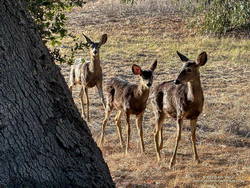
Later, as I approached the Trippet Ranch parking lot, I was welcomed by the local mule deer herd (video). It’s common to see them here and other nearby fields. There were a few does of various ages and a multi-point buck. Although extremely wary, several of the does were oddly curious.
Continuing past the information kiosk at the corner of the parking lot, I headed up the paved road and picked up the Musch Trail. Although we haven’t had much rain this Rain Year, the past two Rain Years were very wet. Paradoxically, the vegetation is bone dry, but some small creeks and springs that haven’t run for years — such as Eagle Springs — still have water. Reflecting last year’s rain, a heavy load of red-orange berries cover most of the toyon bushes along the Musch Trail and throughout the Santa Monica Mountains.
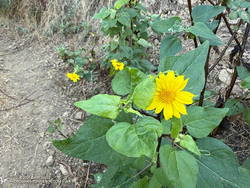
At the top of the Musch Trail, I turned left and worked up Eagle Rock Fire Road, past Eagle Rock, to the top of the Garapito Trail. At times, over the past couple of years, this outstanding trail has been almost impassable. Volunteer trailwork has cleared and repaired the trail multiple times. It’s a good trail for wildflowers, but the lack of rain has reduced the number of early bloomers. Today, canyon sunflower, California everlasting, and California fuchsia were blooming along the trail. This misshapen bush sunflower was blooming along Fire Road #30, near its junction with the Garapito Trail.
This zoomed-in 3D-terrain view of the Palisades Fire perimeter shows the general area of the Trippet Ranch Loop, Temescal Peak, and Temescal Lookout. As of January 23, the Trippet Ranch main parking lot, Musch Trail and Camp, and Eagle Rock appear to be outside of the burn area. Most of Eagle Rock Fire Road, Eagle Springs Fire Road, and the Garapito Trail also appear to be outside the perimeter.
Most parks and open space areas in or near the Palisades Fire burn area remain closed. For more information see:
– 2025 Los Angeles Fires
– California State Parks Incidents Overview
– MRCA Parks
– Topanga State Park
– Top of Reseda (Marvin Braude Mulholland Gateway Park)

